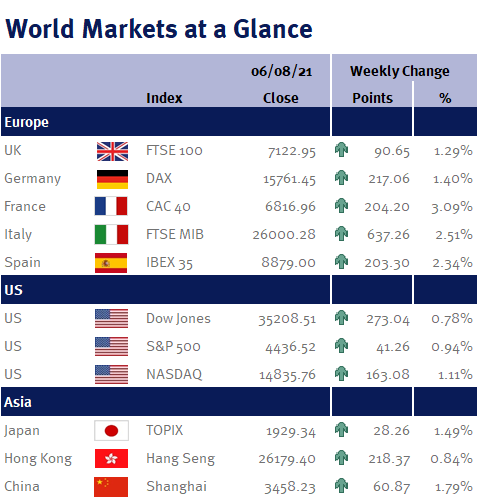In terms of forecasts, the BoE now expects CPI inflation to peak at 4% in the fourth quarter of this year, that’s 1.5% higher than forecast in May, owing to “developments in energy and other goods prices”. Nevertheless, the bank reinforced our view, that inflation remains transitory, as once it has peaked, they continue to expect it will fall back close to their 2% target. Economic growth forecasts were reigned in slightly for the third quarter, due to covid developments since the last report, however, they expect GDP to recover further over the remainder of the year, and reach its pre-pandemic level in the fourth quarter. Finally, having previously estimated unemployment would peak in the third quarter of this year, they now believe it has already peaked.
Along with updated forecasts, having persistently stated it wasn’t considering tightening policy, there was a notable shift in tone as the BoE warned it will need to start some “modest tightening” of monetary policy in the coming years. With the US Fed’s “taper tantrum” of 2013 leading to investment market volatility, the BoE will want to avoid any disorderly unwinding of economic support; sentiment which was bolstered as they guided that it would not unwind QE until the interest rate reaches 0.5%. Consequently, we see no reason this latest update is anything more than a reminder that support must end one day, sentiment which was reinforced by the notable lack of reaction in equity, bond and foreign exchange markets.
Today (Friday 6th August 2021) there were several solid updates on the state of the US labour market. US nonfarm payroll data showed an additional 943k jobs were created in July, that was above expectations of 858k and largely driven by gains in the hospitality and leisure sector, although there were decent gains in other sectors. Along with the release, last month’s payroll data was also revised up to 938k from 850k.
The unemployment rate dropped from 5.9% to 5.4% against expectations of 5.7%, whilst the labour force participation rate at 61.7%, was in-line with expectations, and a slight improvement on June. The fall in unemployment coupled with an uptick in the participation rate is a good sign, as it demonstrates the fall in unemployment was not due to people leaving the work force.
As a consequence of the strong jobs reports, investors will continue to speculate when the Fed is likely to begin tapering its support measures. Whilst it is likely the Fed will acknowledge the strong jobs report, with payrolls remaining substantially lower than the peak reached last year, we expect there needs to be more evidence of substantial further progress, before it will act.
Next week is light on economic data, however, company earnings will continue to dominate headlines as we enter the latter part of the first half earnings season.
Peter Quayle, Fund Manager


